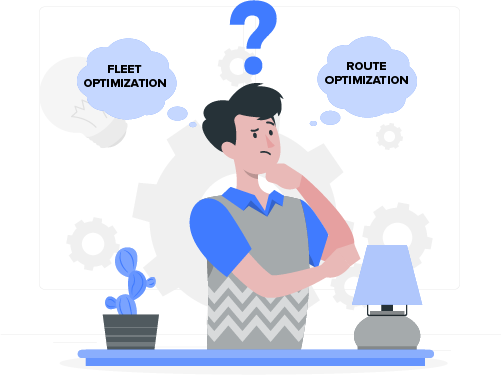When it comes to efficiently managing your transportation operations, two terms that often come up are route optimization and fleet optimization. While they are related, they are not the same thing.
Route Optimization
Route optimization refers to the process of finding the most efficient path for a single vehicle to deliver its goods or services. With the help of advanced algorithms and logistics software, route optimization takes into account various factors such as distance, traffic conditions, delivery windows, and vehicle capacity. The goal is to minimize travel time, fuel consumption, and overall transportation costs.
Some benefits of route optimization include:
- Improved customer satisfaction: By delivering goods or services faster and in a more predictable manner, route optimization can enhance the customer experience and increase satisfaction levels.
- Reduced fuel consumption and emissions: By minimizing unnecessary travel, route optimization can help reduce fuel consumption and lower emissions, making it more environmentally friendly.
- Increased productivity: By enabling drivers to complete more stops in less time, route optimization can increase the productivity of your fleet and improve overall operational efficiency.

Fleet Optimization
Fleet optimization, on the other hand, takes a broader perspective. It involves managing an entire fleet of vehicles and optimizing their operations as a whole. Fleet optimization considers factors beyond individual routes, such as vehicle utilization, maintenance scheduling, driver assignments, and asset management.
Here are some key benefits of fleet optimization:
- Optimal resource allocation: Fleet optimization allows you to allocate your resources, such as vehicles and drivers, in the most efficient way possible. This helps you make the most of your assets and reduce overall costs.
- Improved fleet safety: By monitoring and managing driver behavior, fleet optimization can help improve safety on the roads. It can encourage drivers to follow best practices and avoid risky behaviors, leading to fewer accidents and lower insurance costs.
- Enhanced visibility and control: Fleet optimization provides you with real-time data and analytics, giving you better visibility and control over your operations. This allows you to make informed decisions, adjust routes or schedules as needed, and respond quickly to any unexpected events or issues.
In conclusion, while route optimization focuses on finding the optimal path for a single vehicle, fleet optimization takes a more holistic approach by managing and optimizing the operations of an entire fleet. Both are essential for efficient transportation management, but fleet optimization offers additional benefits by optimizing resource allocation, enhancing safety, and providing better visibility and control over your fleet. By implementing fleet optimization strategies, businesses can unlock significant cost savings, improve customer satisfaction, and increase overall efficiency in their transportation operations.

MSP TMS Opt
The MSP TMS Opt solution is part of the MSP family of solutions that enable the creation of high savings through the digitization of business processes in the field.
MSP TMS Opt is a hardware optimization of bypass ports that optimizes the entire fleet of vehicles. Optimization calculates optimal routes based on entered parameters about vehicles, loads and availability of resources.
With each day of using the detour optimization software, the optimized routes are better planned, and the costs of running the transports are lower, as the optimization tool learns from the optimizations already performed.

Certificate of Excellence
In 2022, i-Rose d.o.o. obtained a certificate of excellence. The company i-Rose d.o.o. meets the criteria of credit excellence for the year 2022 and is one of the most reliable Slovenian business entities that are entitled to use A status as a symbol of credit excellence
